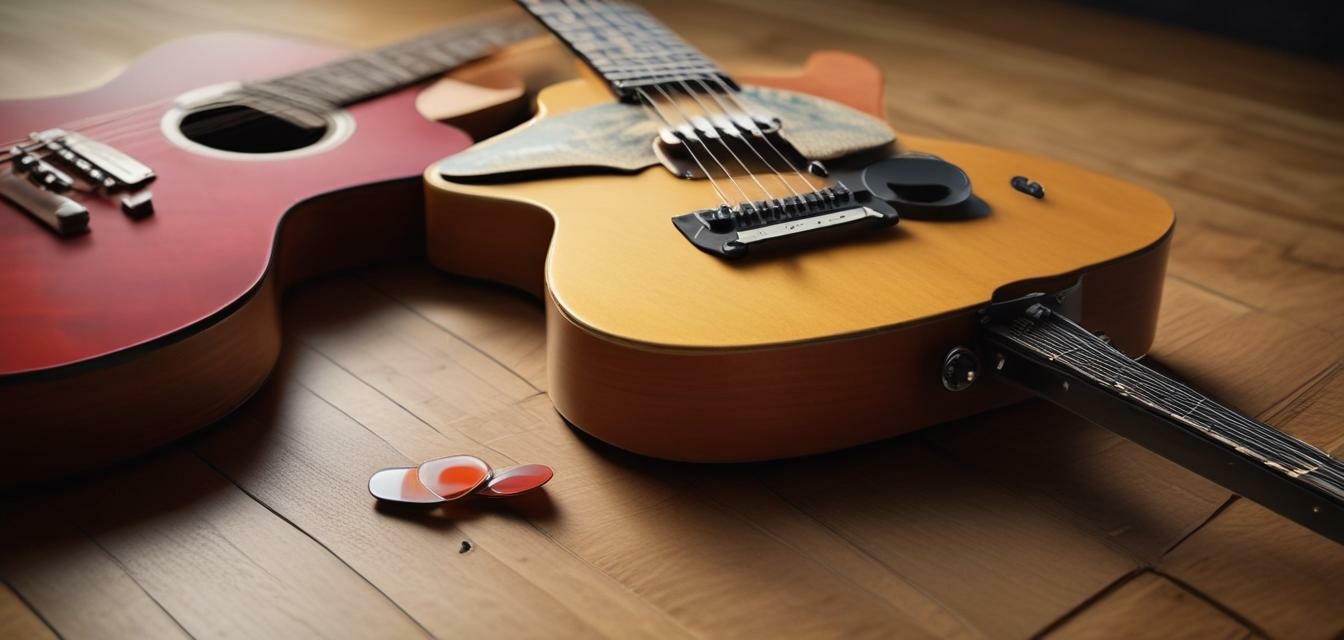
Playing Techniques for Acoustic vs. Electric Fender Guitars
- Understand the unique techniques for both acoustic and electric guitars to enhance your playing.
- Explore fingerpicking and strumming styles predominant in acoustic playing.
- Learn about bending, sliding, and using effects in electric guitar playing.
- Maximize versatility by mastering techniques appropriate for both guitar types.
- Consider factors like genre and playing style to determine the best approach.
In the world of music, Fender guitars have long held a special place for players seeking a unique sound and performance. One essential aspect of mastering any guitar is understanding the different playing techniques suited for each type. Whether you're strumming on an acoustic or jamming with an electric, knowing the right techniques can elevate your game. This article will explore the playing techniques specific to both acoustic and electric Fender guitars, helping you become a more versatile musician.
1. Acoustic Fender Guitar Techniques
Acoustic guitars produce sound through the vibration of their strings, resonating through the body of the guitar. The following techniques are particularly effective for acoustic playing:
| Technique | Description | Tips |
|---|---|---|
| Fingerpicking | Using fingers instead of a pick to pluck the strings. | Start slow and focus on even tempo. |
| Strumming | Moving a pick or fingers across the strings in a rhythmic pattern. | Experiment with upstrokes and downstrokes for variety. |
| Hammer-ons | Playing a note and then adding another by pressing down on the string. | Practice on adjacent strings for smooth transitions. |
| Pull-offs | Playing a note and then pulling off to let another ring out. | Use minimal movement for better control. |
| Trilling | Rapidly alternating between two notes. | Keep your fingers relaxed for quicker movement. |
Advanced Techniques for Acoustic Guitars
- Alternate picking: Switch between downward and upward strokes for fluidity.
- Tapping: Using fingers to tap on the fretboard for unique sound effects.
- Capo usage: Experiment with different placements to change key or tone.
2. Electric Fender Guitar Techniques
Electric guitars offer unique sound possibilities through amplification and effects. Here are key techniques to explore:
| Technique | Description | Tips |
|---|---|---|
| Bending | Pulling the string to raise its pitch. | Use finger strength to achieve precise bends. |
| Sliding | Moving your finger along the string from one note to another. | Maintain pressure for a smooth sound. |
| Vibrato | Shaking the note to create a richer sound. | Practice different speeds for variety. |
| Using effects pedals | Adding reverb, delay, or distortion for unique sounds. | Choose pedals that complement your playing style. |
| Picking techniques | Experimenting with different forms of pick attack. | Try hybrid picking combining plucking and picking. |
Advanced Techniques for Electric Guitars
- Arpeggios: Playing the notes of a chord sequentially.
- Two-hand tapping: Using both hands on the fretboard for waterfall-like phrases.
- Palm muting: Softening the attack of notes with the palm of your picking hand.
3. Comparing Techniques: Acoustic vs. Electric
While both acoustic and electric guitars share foundational playing techniques, the application and execution can differ significantly. Here’s a comparison table to highlight these differences:
| Aspect | Acoustic Guitar Techniques | Electric Guitar Techniques |
|---|---|---|
| Sound Production | Natural resonance from the wooden body. | Amplified sound often altered through effects. |
| Picking Style | Emphasis on fingerpicking and strumming. | Uses picks and often combines with effects. |
| Chords | Rich open chords and fingerstyle. | Bar chords with more distortion effects. |
| Expression | Subtle dynamics through finger control. | Wide range through effects and bends. |
| Techniques Used | More focus on melody and rhythm. | More focus on solos and improvisation. |
4. Conclusion
Whether you're strumming an acoustic or shredding on an electric, mastering the unique playing techniques for each type of Fender guitar is crucial for any musician. By incorporating these techniques into your practice routine, you can enhance your sound and expand your musical versatility.
For further exploration, check out our Expert Tips section, where we provide more insights for enhancing your playing skills and caring for your Fender guitar.
Tips for Best Practices
- Regularly practice techniques across both types of guitars.
- Listen to various music genres to understand different styles.
- Record yourself playing to identify areas of improvement.
- Engage with fellow musicians for shared learning experiences.
Pros
- Enhanced versatility as a musician.
- Broader understanding of multiple playing styles.
- Improved creativity in songwriting and improvisation.
Cons
- Initial learning curve may be steep.
- Time-consuming to master multiple techniques.